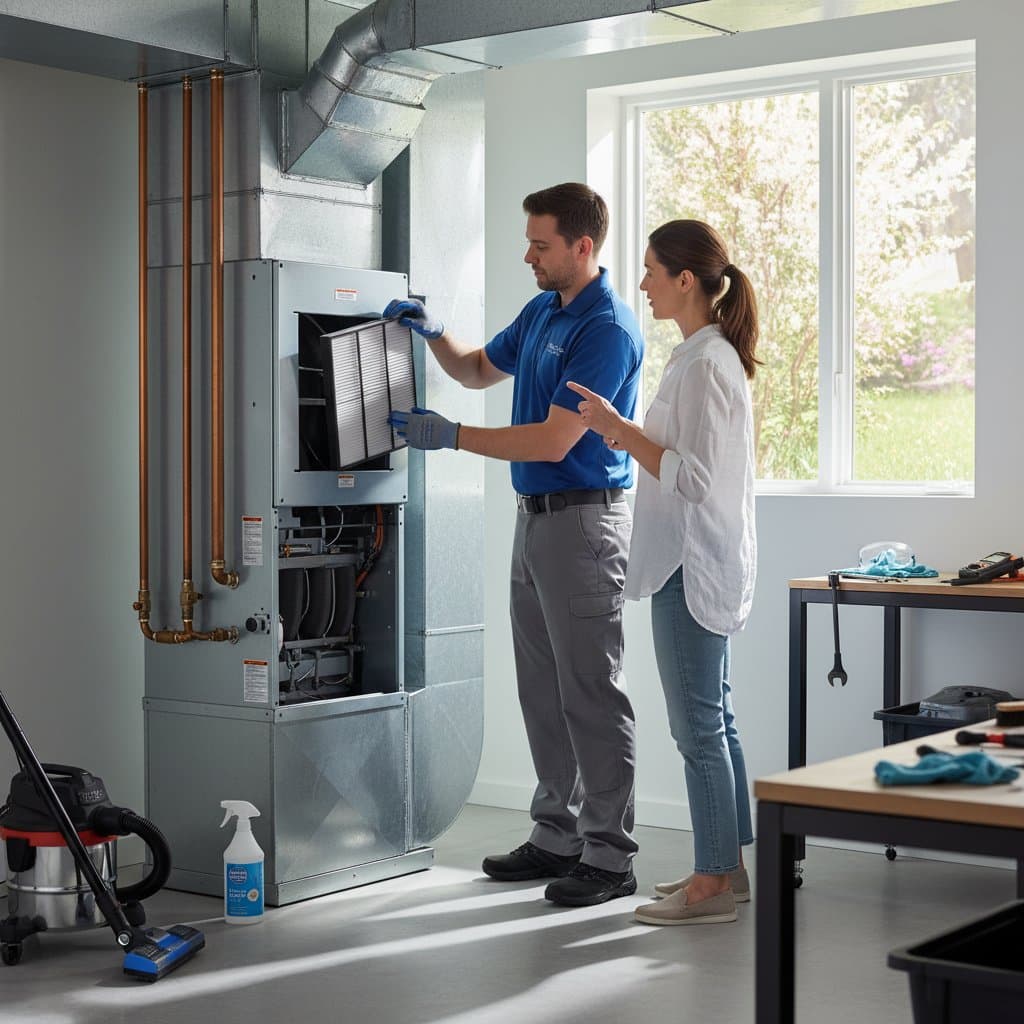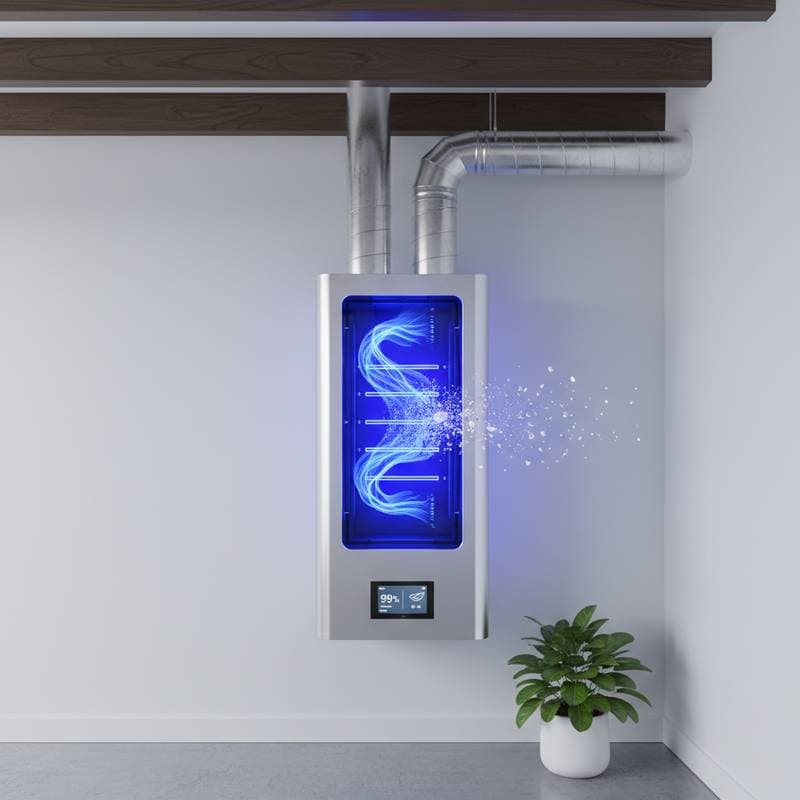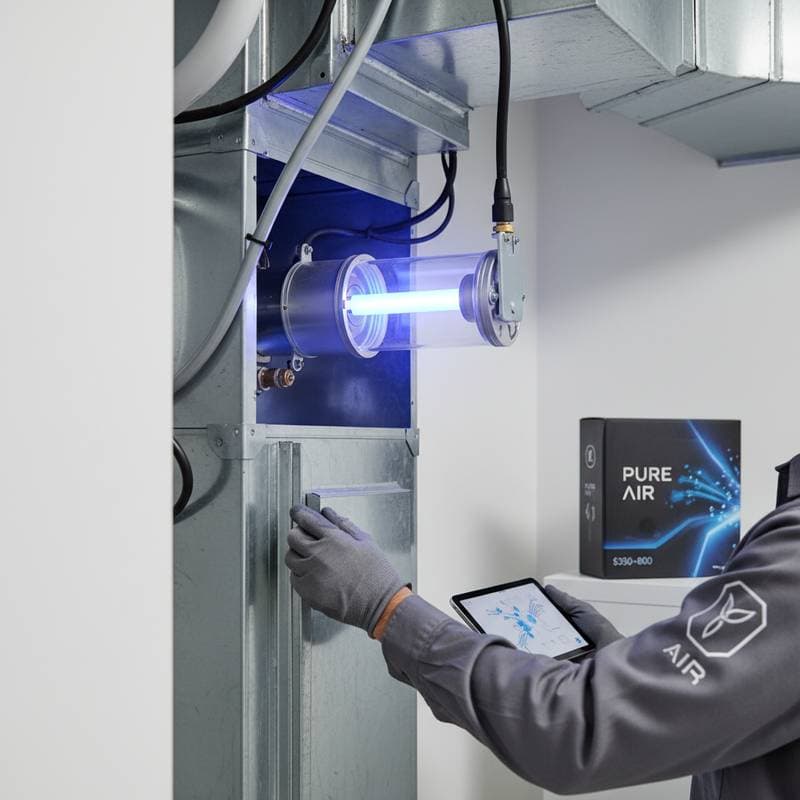8 Spring HVAC Tasks That Prevent Costly Breakdowns
When warmer weather arrives, your HVAC system transitions from heating to cooling. This shift presents an ideal opportunity to perform maintenance that enhances performance and avoids expensive repairs. The following eight tasks provide straightforward guidance to maintain efficiency, reduce energy costs, and ensure reliable operation throughout the season.
The Importance of Spring HVAC Maintenance
HVAC systems operate continuously, accumulating dust, pollen, and debris over winter. Spring cleaning and inspection remove these contaminants, which otherwise increase strain on components. Preventive actions extend equipment lifespan, decrease utility expenses, and minimize disruptions during peak cooling periods.
Homeowners can manage most tasks with basic tools. Professionals must handle electrical, refrigerant, or gas-related work to ensure safety.
1. Replace or Clean Air Filters
Dirty air filters impede airflow, overwork the blower motor, and compromise air quality. Regular attention to filters supports optimal system function.
Steps to follow:
- Inspect the filter monthly during spring.
- Install a new disposable filter or rinse a reusable one per manufacturer guidelines.
- Secure the filter tightly to eliminate gaps.
Clean filters promote efficient operation, lower energy consumption, and prevent issues like coil icing.
2. Clear Debris from the Outdoor Unit
The outdoor condenser requires unobstructed airflow to dissipate heat effectively. Accumulated leaves, clippings, or soil hinder this process and reduce cooling capacity.
Procedure:
- Disconnect power via the unit's switch or circuit breaker.
- Clear vegetation, sticks, and debris from a two-foot radius around the unit.
- Gently brush or vacuum the fins to remove buildup.
- Refrain from damaging fins or directing water toward electrical parts.
A clear unit improves heat exchange and sustains performance.
3. Inspect and Clean Vents and Registers
Obstructed vents disrupt air distribution, leading to uneven temperatures and added system stress. A thorough check ensures balanced circulation.
Key actions:
- Vacuum accumulated dust from vents and registers.
- Reposition furniture, rugs, or drapes that impede flow.
- Note any reduced airflow, which may indicate duct problems requiring expert evaluation.
Proper ventilation maintains consistent comfort across rooms.
4. Verify Thermostat Functionality
The thermostat regulates HVAC operations, so accurate settings are crucial for efficiency. Spring verification confirms readiness for cooling demands.
Optimization steps:
- Switch to cooling mode and confirm system activation.
- Install fresh batteries in non-hardwired models.
- Evaluate programmable or smart thermostats for enhanced control and savings.
Correct calibration activates the system precisely when required.
5. Clean the Condensate Drain Line
Cooling removes moisture, which exits via the drain line. Blockages from algae or residue cause overflows and potential damage.
Cleaning method:
- Power down the system.
- Identify the drain line near the indoor handler.
- Introduce a cup of distilled vinegar or mild cleaner into the line.
- Rinse with water to verify clear passage.
Persistent clogs warrant professional assessment to address underlying causes.
6. Check Ductwork for Leaks and Damage
Leaking ducts allow conditioned air to escape, wasting energy and affecting comfort. Visual examination identifies common issues.
Inspection points:
- Gaps or loose joints at connections.
- Dust marks or detached insulation along seams.
- Auditory cues like whistling during operation.
Apply foil tape to minor leaks. Professionals perform comprehensive tests for larger or hidden problems.
7. Test System Performance Ahead of Summer
Early evaluation detects issues before high demand. Activate the system to assess initial operation.
Monitoring aspects:
- Cooling speed of discharged air.
- Presence of odd sounds or vibrations.
- Brief burning dust scent, typical after dormancy.
Address failures to cool, warm output, or short cycling through immediate professional service.
8. Arrange a Professional Tune-Up
DIY efforts complement but do not replace expert inspection. Technicians uncover subtle faults and fine-tune components.
Standard tune-up elements:
- Refrigerant level and electrical verification.
- Coil and blower cleaning.
- Lubrication of parts and belt adjustments.
- Safety device and airflow calibration.
Such services guarantee safety and peak efficiency.
Frequently Asked Questions
How Often Should HVAC Air Filters Be Replaced?
Replacement intervals range from one to three months, influenced by pets, dust, and usage. Monthly checks prove essential in spring due to elevated pollen.
Is Self-Cleaning of the Outdoor Condenser Safe?
Power disconnection permits safe debris removal. Use low-pressure hose rinsing for fins, reserving internal cleaning for professionals.
What Thermostat Temperature Promotes Cooling Efficiency?
Set to the mid-70s Fahrenheit for balance between comfort and savings. Adjustments account for humidity; programmable models optimize schedules.
Why Does the HVAC System Emit a Musty Smell Initially?
Moisture or drain clogs often cause this. Cleaning the line resolves it; ongoing odors signal potential mold needing inspection.
Is Annual Spring Professional Maintenance Essential?
Affirmative. Routine checks prevent failures by validating electrical and refrigerant integrity during intense summer operation.
Steps to Sustain HVAC Reliability
Spring maintenance safeguards comfort and finances through targeted actions like filter changes and debris removal. Professional support handles complex needs such as duct repairs.
Consistent practices yield dependable cooling, minimizing interruptions and maximizing value from your investment.





